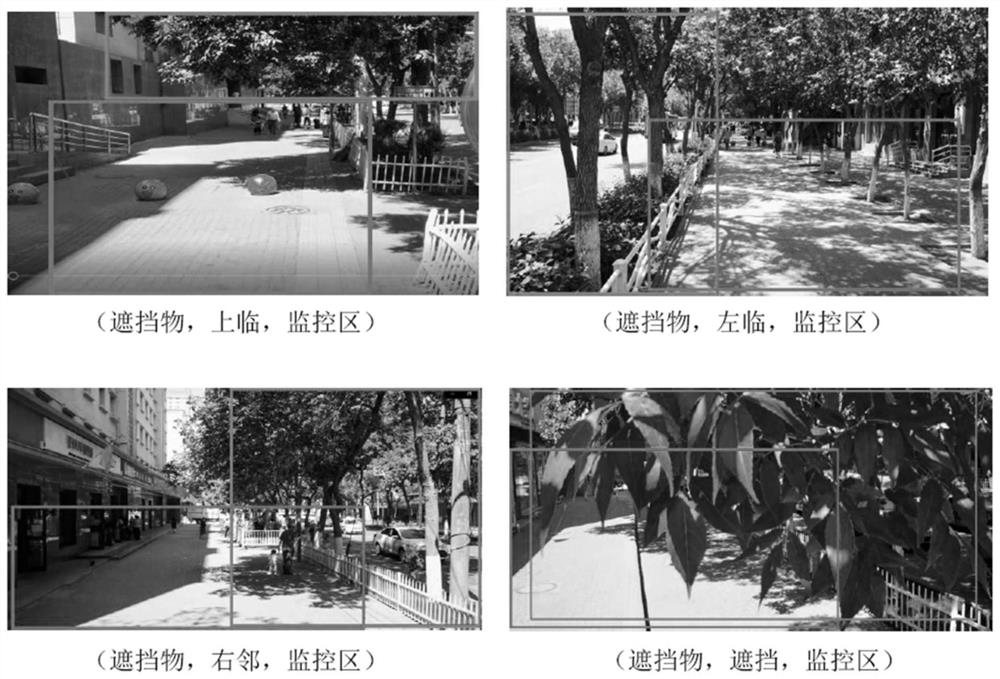Lens shielding discrimination method based on semantic analysis
A technology of lens occlusion and discrimination method, applied in the field of image recognition, can solve problems such as difficulty in discriminating lens occlusion, and achieve the effect of eliminating the interference of meaningless features, reducing the demand for data volume, and fast convergence.
- Summary
- Abstract
- Description
- Claims
- Application Information
AI Technical Summary
Problems solved by technology
Method used
Image
Examples
Embodiment 1
[0034] Embodiment one, see Figure 1-Figure 2 , the present invention is achieved through the following technical solutions: a method for discriminating lens occlusion based on semantic analysis, comprising the following steps:
[0035] S1, collecting an occlusion data set, marking the monitoring area and occlusions of the surveillance camera, and training a target detection network according to the occlusion data set;
[0036] The details are as follows: First, mark a batch of monitoring scene image data sets, mark the main monitoring area of the camera, and train the target detection network so that it can robustly detect the monitoring area;
[0037] Add occluder labels to the above data set and continue training so that the model can detect occluders;
[0038] S2. Use the trained target detection network to detect the monitoring screen; use the target detection algorithm Faster-RCNN to detect the position, size and appearance of the "monitoring area" and the occluder, a...
PUM
 Login to View More
Login to View More Abstract
Description
Claims
Application Information
 Login to View More
Login to View More - R&D Engineer
- R&D Manager
- IP Professional
- Industry Leading Data Capabilities
- Powerful AI technology
- Patent DNA Extraction
Browse by: Latest US Patents, China's latest patents, Technical Efficacy Thesaurus, Application Domain, Technology Topic, Popular Technical Reports.
© 2024 PatSnap. All rights reserved.Legal|Privacy policy|Modern Slavery Act Transparency Statement|Sitemap|About US| Contact US: help@patsnap.com










